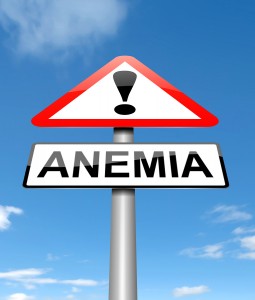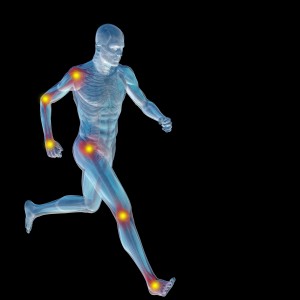Fatigue: Iron Deficiency, Folic Acid and B-12
Fatigue is a common complaint that brings people into my office. People complain they cannot make it through the day or can only be half as active as they used to be. Common causes of fatigue are lack of sleep, poor diet, hypothyroid, adrenal insufficiency, chronic infections, food allergies and the classic anemia. I am going to focus on anemia because though it is often overlooked as the potential root of a patient’s fatigue. We always have to remember the basics when dealing with a patient. A great example came into the office several weeks ago:
A 70 year old female came to the office with 5 months of fatigue that came on slowly. She was forcing herself through the day and working out but felt like she was just getting old. I almost never buy the “getting old” argument. She was having cramping at night in both her calves and pain in the low back and into the left hip especially. Her diet is very good with eating mostly whole foods with only occasional indulgences, although she tended to intermittent digestive issues. She was getting a good amount of sleep each night. She had a history of thyroid issues, but recent blood testing showed no changes. Generally, in this type of patient, I find some type of chronic infection that is causing the immune system to slowly drain a person’s energy as it fights the infection. I could not find any sign. She did test negatively to wheat and dairy so those foods were restricted. My testing showed stress in her cardiovascular circuits and an inability to make repeated muscle contractions without causing weakness. This type of testing called aerobic testing, can reveal if there is a problem with the bodies ability to use fat for energy or its ability to deliver oxygen to the cells so the can produce energy. We tested her aerobic ability again after exposing her to nutrients such as iron, folic acid, B12 and chlorophyll. All strengthened her muscles and made her pass the aerobic function muscle testing. Within one week her energy started to return and 2 weeks later she felt much more like herself making it through the day with full energy and even being able to exercise again! Also the nightly calf cramping stopped. Clearly, her circulation was improving. Why did this happen? We usually find this out as treatment progresses but mostly likely her impaired digestion or food intolerances (which may not be permanent) slowly caused a poor absorption of these nutrients. Sometimes, straight forward nutrient support for formation of healthy functional red blood cells is all that is need to change a person fatigue for the better. Muscle testing often can find a problem before it shows up on a blood test which is what happened in this case.
If a person’s the ability to produce energy at the cellular level is impaired they can have a lengthy list of symptoms besides fatigue, such as brain fog, confusion, suppressed immune system, systemic body pain or fibromyalgia. Nerve cells, muscle cells, intestinal cells, cardiac cells, immune cells, all need energy to function. Anemia, especially the iron deficiency type, starts to break down the ability of the body to produce energy. Energy production in the cells is dependent on red blood cells delivering oxygen so that a series of chemical reactions can take place that create energy (ATP) inside the cells(mitochondria). Anything that is necessary for those reactions to take place or for the delivery of oxygen to happen must be present or it all grinds to a halt. The most common nutrients are Iron, folic acid, B-12, B-6, B-1, B-2, B-3, B-5, magnesium, manganese, phosphorus, molybdenum, and copper. Finding the specific nutrients a patient needs through muscle testing can narrow down what that person really needs the most.






